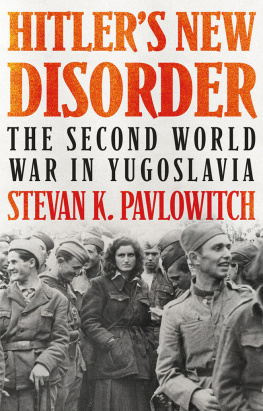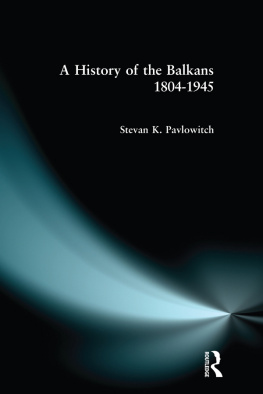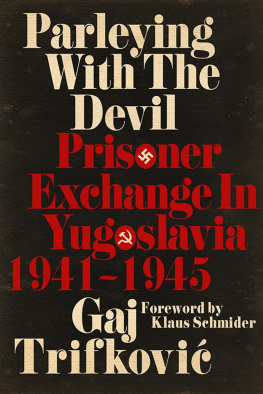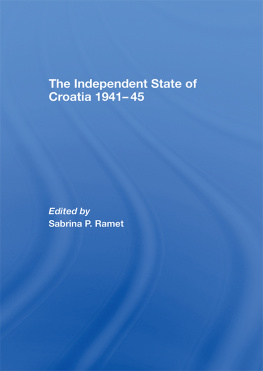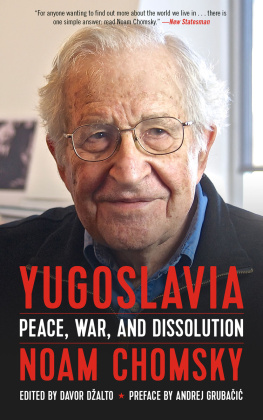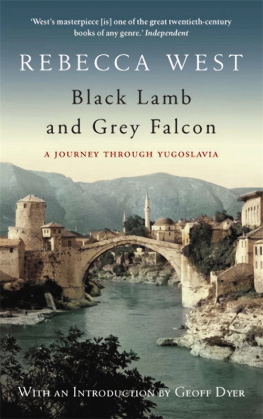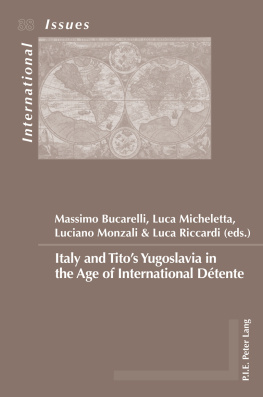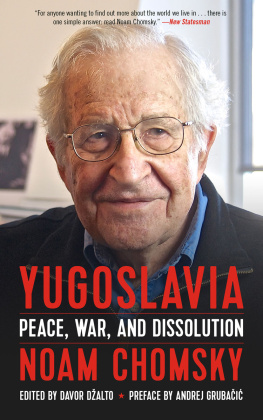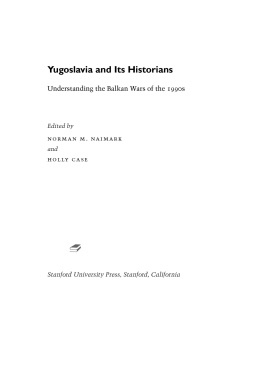HITLERS NEW DISORDER
STEVAN K. PAVLOWITCH
Hitlers
New Disorder
The Second World War in Yugoslavia


Oxford University Press is a department of the University of Oxford. It furthers the Universitys objective of excellence in research, scholarship, and education by publishing worldwide.
Oxford New York
Auckland Cape Town Dar es Salaam Hong Kong Karachi Kuala Lumpur Madrid Melbourne Mexico City Nairobi New Delhi Shanghai Taipei Toronto
With offices in
Argentina Austria Brazil Chile Czech Republic France Greece Guatemala Hungary Italy Japan Poland Portugal Singapore South Korea Switzerland Thailand Turkey Ukraine Vietnam
Oxford is a registered trade mark of Oxford University Press in the UK and certain other countries.
Published in the United States of America by
Oxford University Press
198 Madison Avenue, New York, NY 10016
Copyright Stevan K. Pavlowitch, 2008
This paperback edition with Afterword by Dejan Djoki, 2020
All rights reserved. No part of this publication may be reproduced, stored in a retrieval system, or transmitted, in any form or by any means, without the prior permission in writing of Oxford University Press, or as expressly permitted by law, by license, or under terms agreed with the appropriate reproduction rights organization. Inquiries concerning reproduction outside the scope of the above should be sent to the Rights Department, Oxford University Press, at the address above.
You must not circulate this work in any other form and you must impose this same condition on any acquirer.
Library of Congress Cataloging-in-Publication Data is available Stevan K. Pavlowitch.
Hitlers New Disorder
The Second World War in Yugoslavia
ISBN: 9780197537039
ISBN: 9780197580530 (e-book)
Printed in the United Kingdom on acid-free paper
CONTENTS
A synthetic treatment of a complex topic it may be, but it has had a long gestation. This book has grown out of a special subject on the Second World War in Yugoslavia, taught for many years to undergraduates at the University of Southampton, and out of the parallel research undertaken for a study of Italys involvement across the Adriatic in the same period, that I never found the time to write. It is the unsatisfactory answer to the innumerable questions I asked as the gap grew ever wider between what had happened at ground level (at the various ground levels) and how things were seen by people at the time, on the one hand, and the conventionally received rendering of history books both in communist Yugoslavia and in the (essentially British) West, on the other.
The second destruction of Yugoslavia by the Yugoslavs, with the wars of the Yugoslav succession in the 1990s, has now overtaken in public interest the first destruction by Hitler and Mussolini, and the wars of the early 1940s through which its reconstruction was achieved by the Communist Party of Yugoslavia. Most sources are available for the study of the Second World War period, even if some supposedly delicate intelligence sources are still withheld, and many documents have not survived. Comparisons and cross-examinations are possible. As the Balkans generally remained in the shadow of other fronts, my aim is to see what actually happened in overshadowed Yugoslavia. I do not generally look at British, American or Soviet policy, except through the prism of what the local actors believed Churchill, Roosevelt or Stalin did or did not want to happen there.
The view has long prevailed in communist Yugoslavia that the country had played an important role in the war, on the side of the anti-fascist coalition, through the action of its Peoples Liberation Movement. That view held that there was really no civil war, as the world (including Yugoslavia) was simply divided into a fascist camp and an anti-fascist camp. A more sophisticated version was accepted in the West, mainly provided by literate British actors who had ended up supporting those who in Yugoslavia had come victoriously out of the war and reunited the country, which was what the Allies had wanted.
Questions were already being asked by historians in Yugoslavia and abroad at the time when the country began to slide into disintegration after Titos death. Reasoned scholarly questioning too quickly gave way to emotional revisionism, in all directions. The state-directed and state-distorted approved version of the Second World War was taken over by collective, communal, local and personal memories. The fear of losing ones identity, the feeling of frustration towards the present and even of helplessness towards the future, opened the way to an obsession with the past. There are various markets to buy it allthe rehabilitation of all that was anti-communist in different sections, as well as the return of a nostalgic and fundamentalist communist partisan interpretation.
This is possible as the Second World War in Yugoslavia was indeed the juxtaposition of many such parts. Testimonies tell of loss of bearings, of irrational acts, of lives tossed about in the storm, of combatants seized by the frenzy of battle, of individual acts of compassion. Even so, we only hear the testimonies of those who survived. The historian needs to understand how all the players saw what was happening, and acted accordingly, without forgetting those who did not actually fight. Writing after the 1990s, after the second destruction and the wars of the Yugoslav succession, he must be careful not to get carried away by his knowledge of what has happened since, and fall into anachronistic explanations. He should be able to exchange feelings with the past, even with his own past. He should not be frightened by the fact that he may be destroying legends. This is a period when war and ruin opened up the wounds of societies that had not yet recovered from the First World War, and had not really been given the chance to reorganise, modernise and integrate in a stable new structure. Anarchic behaviour rose to the surface, with irrational evaluations of what was possible, and unreal (not to say There was little solidarity between victims of different communities. Muslim militiamen dressed up as Serb chetniks or partisans, Croat ustashas as Muslims, Serb chetniks as partisans and vice versa, to provoke enmity or to divert reprisals to other yet similar villagers.
The historian should beware of numbers. Yugoslav reports use numbers as did medieval chroniclers or Old Testament prophets. Size counts. It improves ones victim status. Yugoslavias population losses in the Second World War were huge, but the figure of 1,706,000 provided by the Yugoslav government in 1945 to the Inter-Allied Reparations Agency is a myth. Some Yugoslav scholars have since made valiant efforts to arrive at a more realistic figure. In particular, Bogoljub Koovi lets census figures speak for themselves, avoiding politically charged issues of how many died in specific operations, at specific times and in specific locations. He calculates 1,014,000 real war losses, with a minimum of 900,000 and a maximum of 1,150,000.the Regio Esercito, orders issued at lowest level, executions actually carried out and executions reported.
Yugoslav extant original documents also need a careful examination. Some of those captured from rivals have been doctored, while other documents have been altered by their recipients. Many were left open-ended for completion in case of need. Even by going to genuine source material, it is not easy to crack the carapace of truths, half-truths, non-truths and errors which covers the period. Yet it remains essential to recreate the way things appeared to people at the time, and to overcome the complexity of their points of view. In spite of the fact that a narrated historical account is always an interpretation, I believe that a dispassionate history that accepts the intricacy of what it has unearthed is both possible and necessary.

